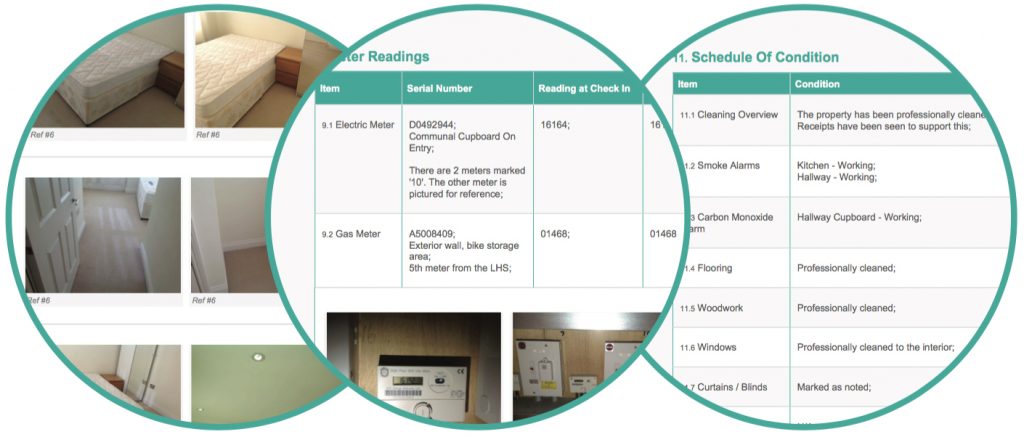The Hidden Risks of a DIY or Amateur Inventory
Published on May 29, 2017 by Sarah Mac

Landlords’ costs have escalated in recent times: that’s a fact. The worrying thing is that, in an attempt to keep costs as low as possible, many landlords will opt to compile their own inventory. Here we look at the reasons why a professional inventory compiled by an independent inventory clerk will actually prove far more cost effective and advantageous than the DIY route.
Professional versus DIY Inventory
There are numerous differences between DIY/amateur inventories, and those compiled professionally.
Non-professional inventories are usually just a couple of pages long and sometimes even handwritten. More often than not, the tenant will not have signed his or her agreement to the contents. This could cause serious issues for the landlord who wishes to make a claim from the tenant’s deposit for damage or missing items, because there is no evidence that the tenant was in agreement with the original inventory.
Photographs are rarely included within the report itself which means they won’t legally form a part of it. As a result, there won’t be any hard evidence to prove the condition of the property at check-in or to show the extent of any damage at check-out.
Meter readings are often not included and the collator of a DIY report will not usually bother to list details about keys. This means there will be no documentary evidence of what keys and how many were provided to the tenant at check-in, so if there is a need to replace any, it will be pretty much impossible to claim back the cost.
When it comes to the cleaning condition of the property, sometimes there will be a few notes but detail will often be lacking. If it is not noted as to how the property was cleaned, i.e. professionally, and there is no evidence by way of receipts, then it will be difficult to force the tenants to cover the cost of a professional clean at end of tenancy.
DIY inventories are also biased. A landlord’s own inventory is unlikely to be looked on favourably by an arbitration panel if a dispute over deposit deductions arises.
Professional inventories on the other hand tend to be 30-40 pages long, running through every part of the property, describing fixtures & fitting in detail plus its current condition. Household appliance manuals are listed and photographed. The tenant is given a copy and invited to respond with comments or amendments within 7 days, otherwise they sign their acceptance. This provides evidence that the tenant was in agreement with the final inventory.
Numerous photographs are included and referenced throughout the inventory. All are date stamped or embedded in the inventory so there is no question over when they were taken.
Meter readings are documented including the serial numbers of the meters. Photographs of the meters and the readings are included.
Keys are listed in detail – including the type and what they are for – and they are clearly photographed.
There is a separate schedule of condition which includes a cleaning overview providing evidence of the cleanliness of the property and how it has been cleaned. Items like flooring, woodwork, windows, mattresses and kitchen units are listed individually. Receipts for any professional cleaning are recorded. Smoke and carbon monoxide alarms are tested and their condition recorded.
A professional inventory is unbiased. It is important to bear in mind that a deposit scheme arbitrator will positively consider the fact that the inventory has not been compiled by the landlord but instead by a trained inventory clerk.
Why Landlords Benefit from a Professional Inventory
A professional inventory helps to avoid deposit scheme disputes. If there is a need to make a claim for deductions, success is much more likely as evidence is detailed and unbiased.
Detailed documentation protects property in ‘swap’ situations where tenants replace contents with their own, lower value/quality items.
Professional inventory clerks are trained to spot issues that landlords may miss and are able to indicate the difference between fair wear and tear and tenant damage.
With a professional inventory, it is easy to see at a glance what maintenance and repair works need to be carried out to restore the property to a rentable state, and whose responsibility those tasks are costs-wise.
The Deposit Protection Service says, “Any inventory document written by the landlord (not an independent third party) that doesn’t give details about the condition or age of an item will have less value when being considered by the adjudicator. It may also affect the landlord’s claim based on ‘a balance of probabilities.”
You can read more about the benefits of a professional inventory and how the deposit protection schemes work in relation to making deductions and dealing with dispute situations in our recent post, The Most Common Tenancy Disputes, and What Can be Done About Them.
Looking for a Reliable, Competitively Priced Professional Inventory Service?
If you have a need for a reliable, flexible and accommodating independent inventory company that offers a straightforward digital reporting service and a super-fast turnaround on all reports, why not get in touch with S.R.P. Inventories?


